Last Updated on April 12, 2024 by Marian Jones
Reading History and Travel Writing about Florence can really inform your visit. So, this post looks at three history books and two on art history which we recommend and then moves on to the writings of those, famous and not so famous, who described their travels to the city. After a selection of short quotations, we look at three full length accounts of travels to Florence: Mary McCarthy’s erudite and beautifully written ‘The Stones of Florence’, David Leavitt’s ‘Florence: a Delicate Case’, with its entertaining asides, and Diana Athill’s ‘A Florence Diary’ which has all the breathless exuberance of a young woman on her first foray abroad in 1947.
The post gives just a brief ‘flavour’ of the works mentioned – there is much more detail, along with longer quotations, on the podcast.
3 history books

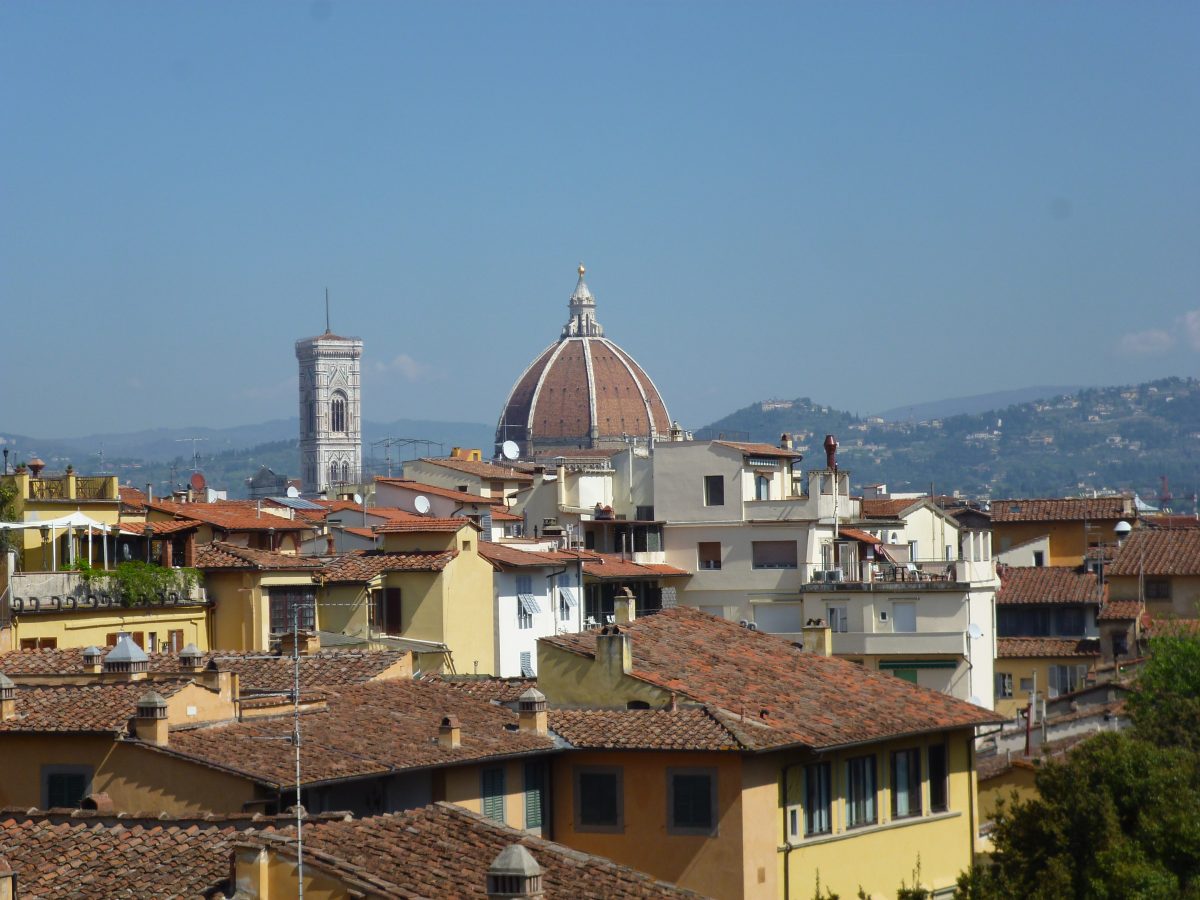
Christpher Hibbert’s ‘Florence the Biography of a City’ is a detailed account of the city’s history from Roman times until the floods of 1966. The factual account is full of cameos and lively descriptions of scenes from Florence’s past, such as a description of Hitler and Mussolini’s tour of the city in an open car in 1938 when they were cheered by huge crowds. Places they visited include the Pitti Palace and the Palazzo della Signoria where Mussolini wrote Firenze fascisstissma next to his signature in the visitors’ book.
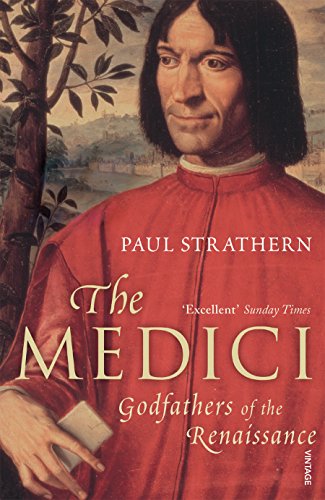
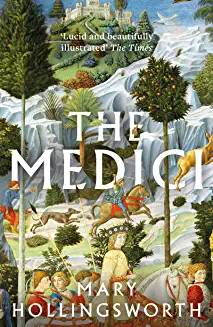
Paul Strathern’s The Medici explains the history of Florence’s ruling family from its earliest generations to its petering out in the 1740s. Much context and explanation is given along the way, for example his statement that the amount Cosimo de Medici spent on art, palaces and other fancy buildings was six times the wealth of all the Peruzzi banks in Europe a century earlier.
Mary Hollingsworth’s book, also called The Medici, is great on unpicking the personalities of the main family members. Her account of Medici wiles and schemes to ensure one of their number was elected pope makes for entertaining reading, as does her description of the glittering court run by Pope Leo X (aka Giovanni de Medici): the gold plate and crimson satin chairs, the staff of nearly 700 and the pet elephant whose portrait was painted by none other than Raphael.
2 history of art books

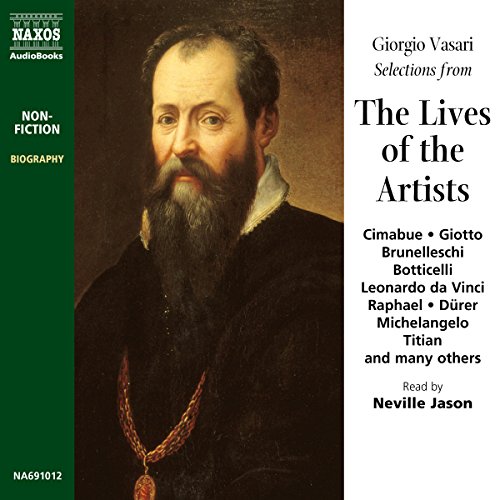
Art and Architecture in Florence by Rolf Wirtz is a chunky, small-format book with over 500 pages, consisting mainly of pictures: sumptuous photographs of many of Florence’s buildings, pull-out panoramas of the city’s most photogenic vistas, plenty of paintings and sculptures and all informed by useful panels of background information on, for instance, Dante and the plague.
Lives of the Artists by Giorgio Vasari was written in 1550 and is thought to be the first ever work in the hitherto unknown field of art history. 46 artists are covered, including all those important to Florence: Cimabue, Giotto, Brunelleschi, Donatello, Lippi, Botticelli and others. The gossipy anecdotes may date back over 500 years, but they still fascinate.
travellers’ quotes
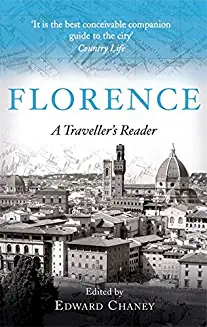

So many travellers to Florence have written about it over the centuries. Here are just 3 quotations – if you want to hear what Charles Dickens, Elizabeth Barrett-Browning, Dylan Thomas and others had to say on the subject, that’s all on the podcast!
David Garrick in 1763: ‘I am astonished at the fine profusion of things we meet with in every part of this city.’
Matthew Arnold in 1897: ‘The cathedral outside (not inside) is to my feeling the most beautiful church in the world and it always looks to me like a hen gathering its chickens under its wings, it stands in such a soft, lovely way with Florence around it.’
Mark Twain in 1924 ‘In the distant plain lay Florence, pink and gray and brown, with the rusty huge dome of the cathedral dominating its centre like a captive balloon ….. all around the horizon was a billowy rim of lofty blue hills, snowed white with innumerable villas.’
3 books of travel writing
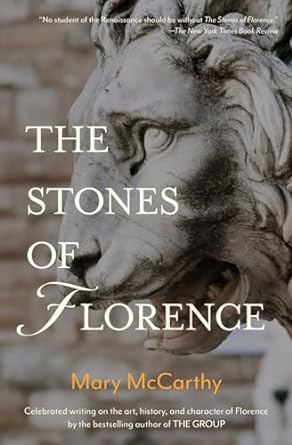

Mary McCarthy’s The Stones of Florence is learned and entertaining in equal measure. There are well-worded descriptions on every possible aspect of the city, from the ‘old maids of both sexes’ who made up the ex-pat community in her day (the 1950s) to the Florentine specialities, listed as tripe, rabbit and ‘a mixture of the combs, livers, hearts and testicles of rooters, which do not appeal to the foreign palate.’ Every page is a delight.
Florence: A Delicate Case by David Leavitt tells of the time the author and his partner spent living in Florence. Typical of the many informative asides are his passing description of Santa Maria Novella as ‘a handsome testament to Fascist atavism’ and his descriptions of the Florentine diet: ‘chicory sautéed with hot peppers, white beans served at room temperature with hot olive oil and pepper’ plus the ’city’s famous soups’ of pappa al pomodora and ribollita.
Diana Athill wrote A Florence Diary in 1947, the account of her first foray abroad as an independent young woman. Her delights while sightseeing – ‘the most glorious collection of pictures in’ at the Pitti Palace and the Medici Chapel which ‘positively stuns one with its magnificence’ – are mixed with the culinary pleasures she enjoyed, such as delicious pastries and giant juicy peaches. There’s mention too of the young men who took her and her companion out to lunch and of the new straw hat which won her much admiration.
Listen to the POdcast
Reading suggestions
Florence, the Biography of a City by Christopher Hibbert
The Medici by Paul Strathern
The Medici by Mary Hollingsworth
Art and Architecture in Florence by Rolf C Wirtz
Lives of the Artists by Giorgio Vasari
The Stones of Florence by Mary McCarthy
Florence: A Delicate Case by David Leavitt
A Florence Diary by Diana Athill
Florence: A Traveller’s Reader by Edward Cheney
links for this post
Previous episode The Uffizi
Next episode Florence in Literature





